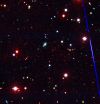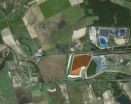(Press-News.org) Learning from competitors is a critically important form of learning for animals and humans. A new study has used brain imaging to reveal how people and animals learn from failure and success.
The team from Bristol University led by Dr Paul Howard-Jones, Senior Lecturer in Education in the Graduate School of Education and Dr Rafal Bogacz, Senior Lecturer in the Department of Computer Science, scanned the brains of players as they battled against an artificial opponent in a computer game.
In the game, each player took turns with the computer to select one of four boxes whose payouts were simulating the ebb and flow of natural food sources.
Players were able to learn from their own successful selections but those of their competitor failed completely to increase their neural activity. Instead, it was their competitor's unexpected failures that generated this additional brain activity. Such failures generated both reward signals in the brains of the players, and learning signals in regions involved with inhibiting response. This suggests that we benefit from our competitors' failures by learning to inhibit the actions that lead to them.
Surprisingly, when players were observing their competitor make selections, the players' brains were activated as if they were performing these actions themselves. Such 'mirror neuron' activities occur when we observe the actions of other humans but here the players knew their opponent was just a computer and no animated graphics were used. Previously, it has been suggested that the mirror neuron system supports a type of unconscious mind-reading that helps us, for example, judge others' intentions.
Dr Howard-Jones added: "We were surprised to see the mirror neuron system activating in response to a computer. If the human brain can respond as though a computer has a mind, that's probably good news for those wishing to use the computer as a teacher."
INFORMATION:
The findings of the study are revealed in a paper published online by the journal – NeuroImage.
I win, you lose: Brain imaging reveals how we learn from our competitors
What's on your computer's mind?
2010-10-14
ELSE PRESS RELEASES FROM THIS DATE:
Life expectancy higher in Israel than in US, according to Ben-Gurion U. researcher
2010-10-14
BEER-SHEVA, ISRAEL, October 13, 2010 — A new study conducted by a researcher at Ben-Gurion University of the Negev (BGU) for Jerusalem's Taub Center for Social Policy Studies in Israel reports that Israeli's have a higher life expectancy on average than Americans and residents of other OECD (Organization for Economic Cooperation and Development) countries.
According to the most recent data, from 2005, the average American life expectancy is now 78 years; for Israeli Jews, approximately 81 years and Israeli Arabs, 79 years. Japan has the highest life expectancy of OECD ...
Train a computer to classify pictures and videos based on the elements that they contain
2010-10-14
University of Granada researchers have developed a new computer technique that allows to "train" computers to interpret the visual contents of a video or picture. This advance will allow to classify automatically pictures basing on whether individuals or specific objects are present in such images. Videos can also be classified according to specific poses.
At present, computer search and classification of images is made basing on the name of the file, folder or on features as date or size, but the visual information contained was never used for classification purposes. ...
Study demonstrates pine bark naturally improves tinnitus
2010-10-14
HOBOKEN, N.J. (Sept. 13, 2010) – More than 50 million Americans will experience some degree of tinnitus in their lifetime, according to the American Tinnitus Association. Tinnitus is a hearing condition that causes the constant misperception of sound, including hissing, ringing and rushing noises. A study recently published in Panminerva Medica reveals that Pycnogenol® (pic-noj-en-all), an antioxidant plant extract derived from the bark of the French maritime pine tree, is effective in relieving tinnitus symptoms by improving blood flow in the inner ear.
"Impaired blood ...
Biopharma leaders to reveal successful strategies for China, India at the PharmAsia Summit
2010-10-14
San Francisco, Calif., 13 October, 2010 - Elsevier Business Intelligence, publisher of PharmAsia News, IN VIVO and "The Pink Sheet," today announced the agenda for Windhover's 2nd PharmAsia Summit (Oct. 25-26). This year's Summit will bring top biopharma leaders from Asia and the U.S. to San Francisco to share what works and what doesn't in China, India, Japan and the Pacific Rim.
At the PharmAsia Summit, you'll hear Asia strategies and case studies from industry leading experts on dealmaking, commercial strategy, outsourcing, regulatory risks, IP protection, and pricing ...
Early role of mitochondria in AD may help explain limitations to current beta amyloid hypothesis
2010-10-14
(NEW YORK, NY, October 13, 2010) – Before Alzheimer's patients experience memory loss, the brain's neurons have already suffered harm for years.
A new study in mouse models by researchers at Columbia University Medical Center has found that the brain's mitochondria -- the powerhouses of the cell -- are one of the earliest casualties of the disease. The study, which appeared in the online Early Edition of PNAS, also found that impaired mitochondria then injure the neurons' synapses, which are necessary for normal brain function.
"The damage to synapses is one of the ...
National study shows 1 in 5 children meet criteria for a mental disorder across their lifetime
2010-10-14
Washington, DC, 13 October 2010 - Mental disorders in children are often difficult to identify due to the myriad of changes that occur during the normal course of maturation. For the first time, researchers at the National Institute of Mental Health have reported on the prevalence data on a broad range of mental disorders in a nationally representative sample of U.S. adolescents, which show that approximately one in five children in the U.S. meet the criteria for a mental disorder severe enough to disrupt their daily lives.
The prevalence of the mental health disorders ...
Ghosts of the future
2010-10-14
Astronomers using the South Pole Telescope report that they have discovered the most massive galaxy cluster yet seen at a distance of 7 billion light-years. The cluster (designated SPT-CL J0546-5345) weighs in at around 800 trillion Suns, and holds hundreds of galaxies.
"This galaxy cluster wins the heavyweight title. It's among the most massive clusters ever found at this distance," said Mark Brodwin, a Smithsonian astronomer at the Harvard-Smithsonian Center for Astrophysics. Brodwin is first author on the paper announcing the discovery, which appeared in the Astrophysical ...
Compound in celery, peppers reduces age-related memory deficits
2010-10-14
CHAMPAIGN, lll. — A diet rich in the plant compound luteolin reduces age-related inflammation in the brain and related memory deficits by directly inhibiting the release of inflammatory molecules in the brain, researchers report.
Luteolin (LOOT-ee-oh-lin) is found in many plants, including carrots, peppers, celery, olive oil, peppermint, rosemary and chamomile.
The new study, which examined the effects of dietary luteolin in a mouse model of aging, appears in the Journal of Nutrition.
The researchers focused on microglial cells, specialized immune cells that reside ...
Can Hungary's red sludge be made less toxic with carbon?
2010-10-14
BLOOMINGTON, Ind. -- The red, metal-laden sludge that escaped a containment pond in Hungary last week could be made less toxic with the help of carbon sequestration, says an Indiana University Bloomington geologist who has a patent pending on the technique.
The bauxite residue now covers 40 square kilometers south of the Danube River, and has caused the deaths of eight Hungarians and injured at least 150. The residue also has caused the extinction of life in a local river and as yet unknown environmental damage elsewhere. While human deaths in the wake of the disaster ...
Hemostatic powder stops bleeding ulcers: Doctor
2010-10-14
TORONTO, Ont., October 13, 2010 — A new material similar to that used by the U.S. Military to treat traumatic injuries is showing promise as the next novel treatment for bleeding ulcers, a condition that commonly affects up to 15 per cent of adults, according to Hong Kong physician Dr. James Lau.
Dr. Lau is presenting his findings today on this world-first research at the 23rd International Course on Therapeutic Endoscopy. The course is a world-renowned international conference on the latest innovations in endoscopy organized and hosted by St. Michael's Hospital.
"Nearly ...
LAST 30 PRESS RELEASES:
Tea linked to stronger bones in older women, while coffee may pose risks
School feeding programs lead to modest but meaningful results
Researchers develop AI Tool to identify undiagnosed Alzheimer's cases while reducing disparities
Seaweed based carbon catalyst offers metal free solution for removing antibiotics from water
Simple organic additive supercharges UV treatment of “forever chemical” PFOA
£13m NHS bill for ‘mismanagement’ of menstrual bleeds
The Lancet Psychiatry: Slow tapering plus therapy most effective strategy for stopping antidepressants, finds major meta-analysis
Body image issues in adolescence linked to depression in adulthood
Child sexual exploitation and abuse online surges amid rapid tech change; new tool for preventing abuse unveiled for path forward
Dragon-slaying saints performed green-fingered medieval miracles, new study reveals
New research identifies shared genetic factors between addiction and educational attainment
Epilepsy can lead to earlier deaths in people with intellectual disabilities, study shows
Global study suggests the underlying problems of ECT patients are often ignored
Mapping ‘dark’ regions of the genome illuminates how cells respond to their environment
ECOG-ACRIN and Caris Life Sciences unveil first findings from a multi-year collaboration to advance AI-powered multimodal tools for breast cancer recurrence risk stratification
Satellite data helps UNM researchers map massive rupture of 2025 Myanmar earthquake
Twisting Spins: Florida State University researchers explore chemical boundaries to create new magnetic material
Mayo Clinic researchers find new hope for toughest myeloma through off-the-shelf immunotherapy
Cell-free DNA Could Detect Adverse Events from Immunotherapy
American College of Cardiology announces Fuster Prevention Forum
AAN issues new guideline for the management of functional seizures
Could GLP-1 drugs affect risk of epilepsy for people with diabetes?
New circoviruses discovered in pilot whales and orcas from the North Atlantic
Study finds increase in risk of binge drinking among 12th graders who use 2 or more cannabis products
New paper-based technology could transform cancer drug testing
Opioids: clarifying the concept of safe supply to save lives
New species of tiny pumpkin toadlet discovered in Brazil highlights need for conservation in the mountain forests of Serra do Quiriri
Reciprocity matters--people were more supportive of climate policies in their country if they believed other countries were making significant efforts themselves
Stanford Medicine study shows why mRNA-based COVID-19 vaccines can cause myocarditis
Biobanking opens new windows into human evolution
[Press-News.org] I win, you lose: Brain imaging reveals how we learn from our competitorsWhat's on your computer's mind?



